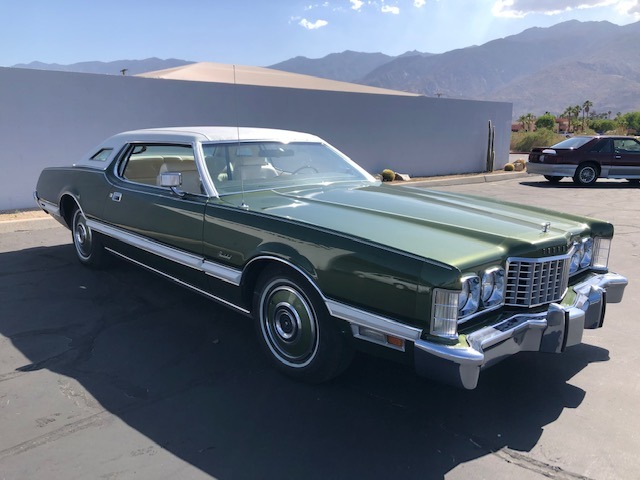

The 1973 Ford Thunderbird grew in size due to the mandated 5 mph bumpers and this was the final year for the 429 and leaded gas. Ford built 36,055 Thunderbirds in 1971, 57,814 examples in 1972 (the first year of the new styling), and 87,269 examples in 1973 (the highest production figure to date).

The $5,300 base price of the 1972 Thunderbird was the same as the 1972 Thunderbird hardtop coupe, but the 1973 Thunderbird increased to nearly $5,600. While the previous generation of Thunderbirds was offered in three body styles including a two-door hardtop, and a two- and four-door Landau, the 6th Gen Thunderbird was offered solely as a hardtop coupe. The standard transmission was the three-speed Cruise-O-Matic automatic. The 429 delivered 201 (net) horsepower and the Thunderbird was rated at 219 (net) hp. Both the 429 and 460 had overhead valves, a cast-iron block, five main bearings, a Motorcraft four-barrel carburetor, and 8.0:1 compression. The 400 Cleveland engine proved unable to provide the performance commonly associated with a personal luxury car and was replaced by the 429 CID V8 early on in the model year, with the 460 CID becoming optional. The light and climate controls were to the driver's left, and on the other side were the wiper controls, information center, and radio controls. The interior was shared with the mark IV, but with a different dashboard, and instead of square gauges used by the mark IV, the Thunderbird had round dials for the speedometer, clock, and fuel gauge. The previous 'beak' introduced for the 1971 model year became more conservative and the sequential turn signals which had been apart of the Thunderbird since 1965 did not return in 1972. Both the Continental Mark IV and the Thunderbird shared similar styling and many components, with the primary differences being confined to the rear body panels and the frontal area. With a wheelbase of 120.4-inches, a length of 225 inches, and a width of nearly 80-inches, it was the largest Thunderbird ever produced, and with its curb weight exceeding 5,000 pounds, they were also the heaviest coupes ever produced by Ford (albeit, the Lincoln Mark IV counterpart was heavier).

Ford introduced its sixth generation of Thunderbird styling in the fall of 1971 as a 1972 model.


 0 kommentar(er)
0 kommentar(er)
